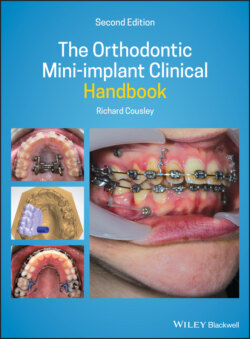Читать книгу The Orthodontic Mini-implant Clinical Handbook - Richard Cousley - Страница 15
1.5 Principal Design Features
ОглавлениеMost mini‐implants have three constituent parts: the head, neck and body (Figure 1.1), and are fabricated from a titanium alloy such as surgical grade 5 (Ti‐6Al‐4V). Grade 5 machined (smooth) titanium alloy is a good choice for mini‐implants because it supports rapid cell proliferation and has good cytocompatibility (which is better than stainless steel) and cell adhesion [4,5]. The head is the platform which connects to orthodontic appliances or elastic traction. The neck is the part that traverses the mucosa. The body is the endosseous section with threads around a core and a tapered tip. Mini‐implants were initially available only in self‐tapping (non‐drilling) forms whereby a full‐depth pilot hole had to be drilled before mini‐implant insertion. However, many self‐drilling screws are now available. These have a tapered body shape with sharp tips and threads, and are inserted in a corkscrew‐like manner. Full‐depth predrilling is avoided, although shallow perforation of the cortex is still advantageous where the cortex is thick or dense, for example the posterior mandible and palate.
